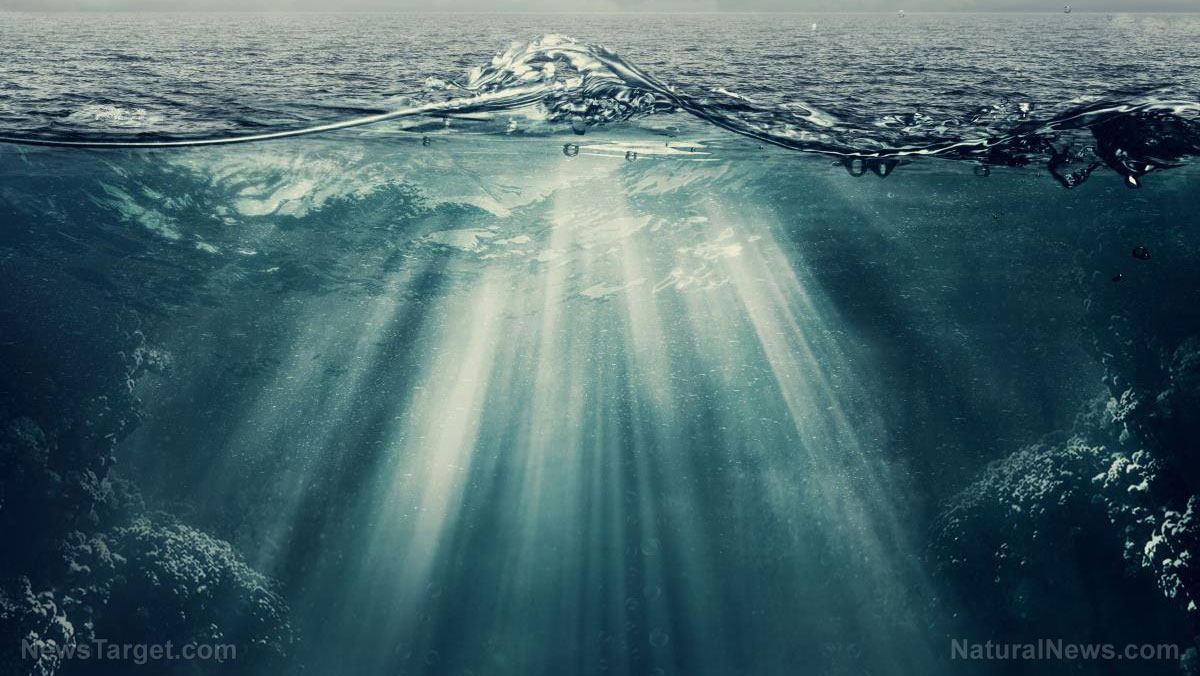
Holes spitting warm fluids from the border between tectonic plates have been found at the bottom of the ocean off the coast of Oregon. Scientists believe this strange, never-before-seen phenomenon, known as Pythia's Oasis after an ancient Greek priestess, could give a better understanding of earthquake risk along the hazardous fault.
The Cascadia subduction zone extends from Vancouver Island to northern California. It is the offshore area where the Explorer, Juan de Fuca and Gorda oceanic plates slip under the North American continental plate. The plate boundary can create magnitude 9 earthquakes or higher. These earthquakes could also be accompanied by tsunamis up to 100 feet high.
Research published in the journal Science Advances discovered that off the coast of Newport, Oregon, on the seafloor 3,412 feet below the ocean surface, there is a set of at least four small vents bubbling fluids from deep within the fault.
These vents, each of which measures about two inches across, are about 50 miles from the shore. The geochemistry of these fluids showed that they come from about 2.5 miles deep, near where the plates meet. The escape of these fluids could influence how the plates connect, which could eventually influence how and when earthquakes happen in the region.
"It's potentially changing the stresses and the pressure of fluids at greater depth. That becomes interesting because those are the depths where we think about earthquakes possibly occurring," Demian Saffer, director of the University of Texas Institute for Geophysics, who was not part of the research, told Live Science.
We are building the infrastructure of human freedom and empowering people to be informed, healthy and aware. Explore our decentralized, peer-to-peer, uncensorable Brighteon.io free speech platform here. Learn about our free, downloadable generative AI tools at Brighteon.AI. Every purchase at HealthRangerStore.com helps fund our efforts to build and share more tools for empowering humanity with knowledge and abundance.
The vents were first discovered during a research cruise by then-University of Washington graduate student Brendan Philip, now a White House policy adviser. The ship's sonar identified bubbles soaring from the seafloor, study co-author Evan Solomon, an associate professor of oceanography at the University of Washington, said in a statement.
"They explored in that direction and what they saw was not just methane bubbles, but water coming out of the seafloor like a fire hose. That's something that I've never seen, and to my knowledge has not been observed before," Solomon said.
Fluids likely originate from hot portions of the crust
The fluids were 16 degrees Fahrenheit warmer than the surrounding seawater, indicating they originate from deep, hot portions of the crust, and are rich in minerals such as boron and lithium.
According to Saffer, the fluids are originating from the crust that was last on the surface two million years ago. Researchers can't get a sample of the rock, but they are getting the fluids that are touching those rocks.
Solomon said the latest seeps aren't connected to geologic activity at the adjacent seafloor observatory. Instead, they happen near vertical faults that crosshatch the enormous Cascadia subduction zone. These strike-slip faults, where sections of ocean crust and sediment move past each other, exist because the ocean plate strikes the continental plate at an angle, putting stress on the overlapping continental plate.
Loss of fluid from the offshore megathrust interface through these strike-slip faults is significant because it lowers the fluid pressure between the sediment particles and consequently raises the friction between the oceanic and continental plates.
Solomon said fluid released from the fault zone is like leaking lubricant. It is bad news for earthquake hazards because less lubricant means stress can build to produce a damaging quake. (Related: Large reservoirs of "fire ice" beneath the ocean can potentially trigger devastating disasters if released.)
This is the first known site of its kind and similar fluid seep sites may exist nearby, although they are hard to identify from the ocean's surface.
A critical fluid leak off central Oregon could explain why the northern portion of the Cascadia subduction zone, off the coast of Washington, is thought to be more strongly locked than the southern section off the coast of Oregon.
Solomon just came back from an expedition to watch sub-seafloor fluids off the northeast coast of New Zealand.
The Hikurangi subduction zone is identical to the Cascadia subduction zone but produces more repeated, smaller earthquakes that make it easier to study. However, it has a different sub-seafloor structure, meaning it's unlikely to have fluid seeps like those found in the latest study, Solomon said.
Follow OceanHealthnews.com for more stories about Earth's oceans.
Watch the video below to know more about the art of ocean exploration.
This video is from the Pool Pharmacy channel on Brighteon.com.
More related stories:
Foreign landscape: Scientists find vibrant "living rocks," mirror pools on ocean floor.
Deep sea mining: discovery of 6 new species in unexplored hydro-thermal vents.
There is no correlation between CO2 and rising ocean levels, according to decades of data from NOAA.
Sources include:
Please contact us for more information.




















